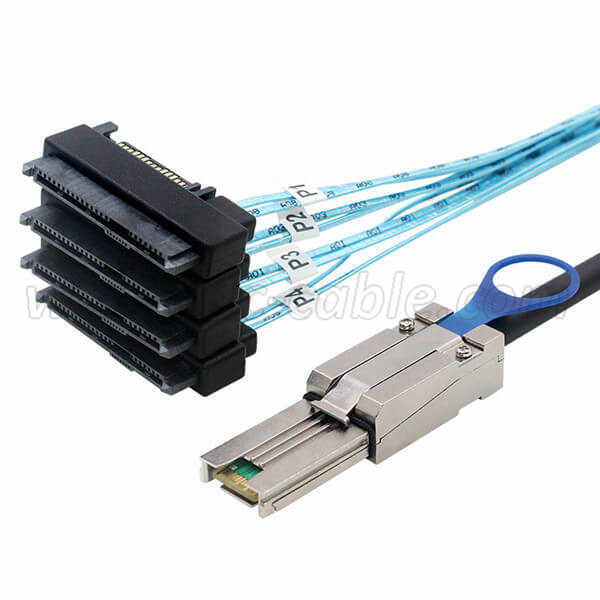Are there any common troubleshooting steps for Mini-SAS connections?
Troubleshooting Mini-SAS connections involves systematic checks to ensure each component is properly connected and configured. Here are some common troubleshooting steps:
1. Physical Connection Check:
1> Ensure that the Mini-SAS cable is securely connected to both the server and the device (such as a storage enclosure or another server). Check for any loose connections or bent pins.
2> If using an external Mini-SAS cable (SFF-8088), verify that the connectors are properly seated and any locking mechanisms are engaged.
2. Power Cycling:
Power off both the server and the connected device. Then, power them back on after a few seconds. This can sometimes resolve communication issues caused by transient faults.
3. Verify Compatibility:
Ensure that the Mini-SAS cable and connectors are compatible with both the server's Mini-SAS port (if present) and the device you are connecting to. Mismatched connectors or cable types can prevent proper communication.
4. Check for Firmware/Driver Updates:
Ensure that the server's firmware (BIOS/UEFI) and any relevant drivers for the Mini-SAS controller or HBA (Host Bus Adapter) are up to date. Updated firmware and drivers often resolve compatibility issues and improve performance.
5. Inspect for Damage:
Visually inspect the Mini-SAS cable and connectors for any physical damage. Replace any cables or connectors that appear damaged or worn out.
6. BIOS/UEFI Settings:
Access the server's BIOS or UEFI settings to verify that the Mini-SAS controller or HBA is detected and configured correctly. Ensure that the controller is enabled and set to the appropriate operating mode (e.g., RAID mode if applicable).
7. Operating System Configuration:
Check the operating system's device manager or equivalent tool to ensure that the Mini-SAS controller or HBA is recognized and properly configured. Install any necessary drivers or management software provided by the controller's manufacturer.
8. Testing with Diagnostic Tools:
Some Mini-SAS controllers or HBAs come with diagnostic utilities or tools that can help diagnose connectivity or performance issues. Use these tools to run tests and verify the integrity of the connection.
9. Verify Cable Length:
Ensure that the Mini-SAS cable length does not exceed the recommended maximum for your setup. Longer cables can lead to signal degradation and connectivity issues.
10. Check for Interference:
Ensure that there are no sources of electromagnetic interference (EMI) near the Mini-SAS cables. EMI can disrupt data transmission and cause intermittent connectivity problems.
11. Consult Manufacturer Documentation:
Refer to the server's and Mini-SAS controller's manufacturer documentation for specific troubleshooting steps and recommended practices.
By following these troubleshooting steps, you can often identify and resolve common issues with Mini-SAS connections, ensuring stable and reliable data communication between your server and storage devices.
Send your message to us:
Post time: Jul-25-2024
